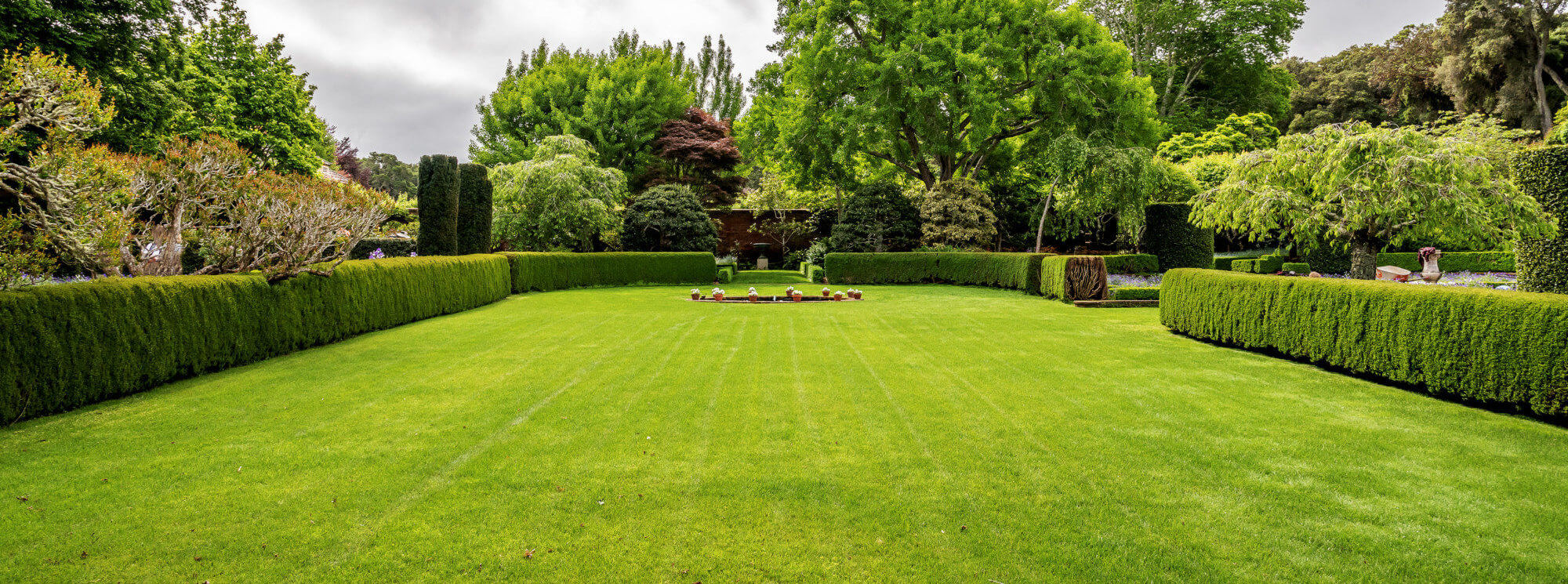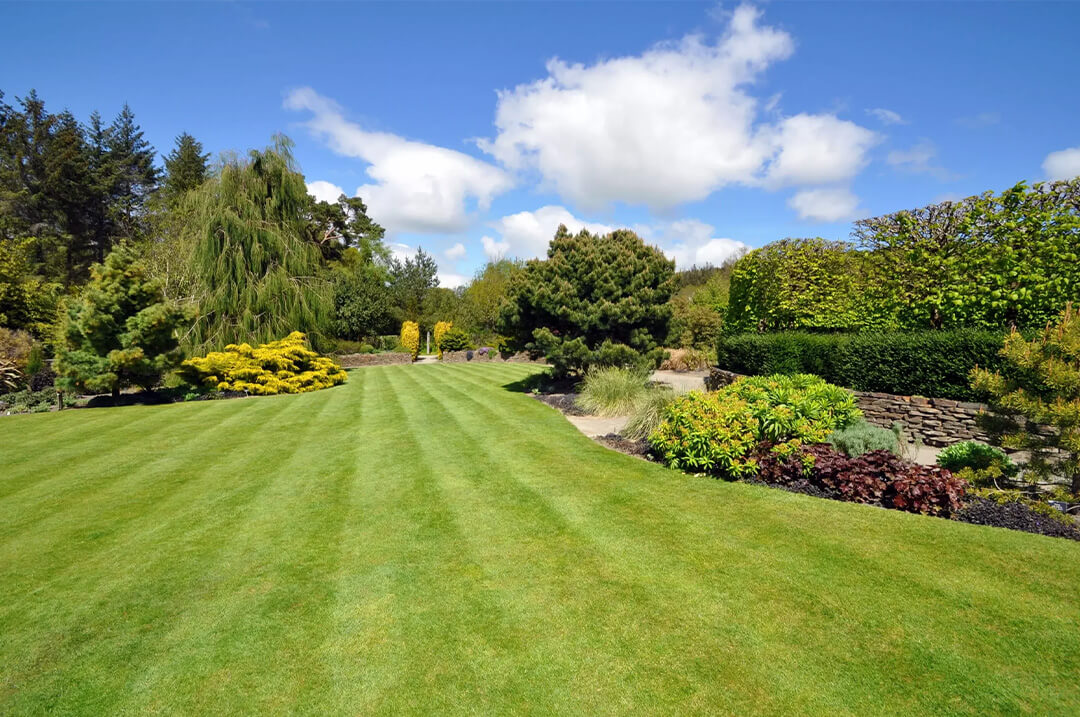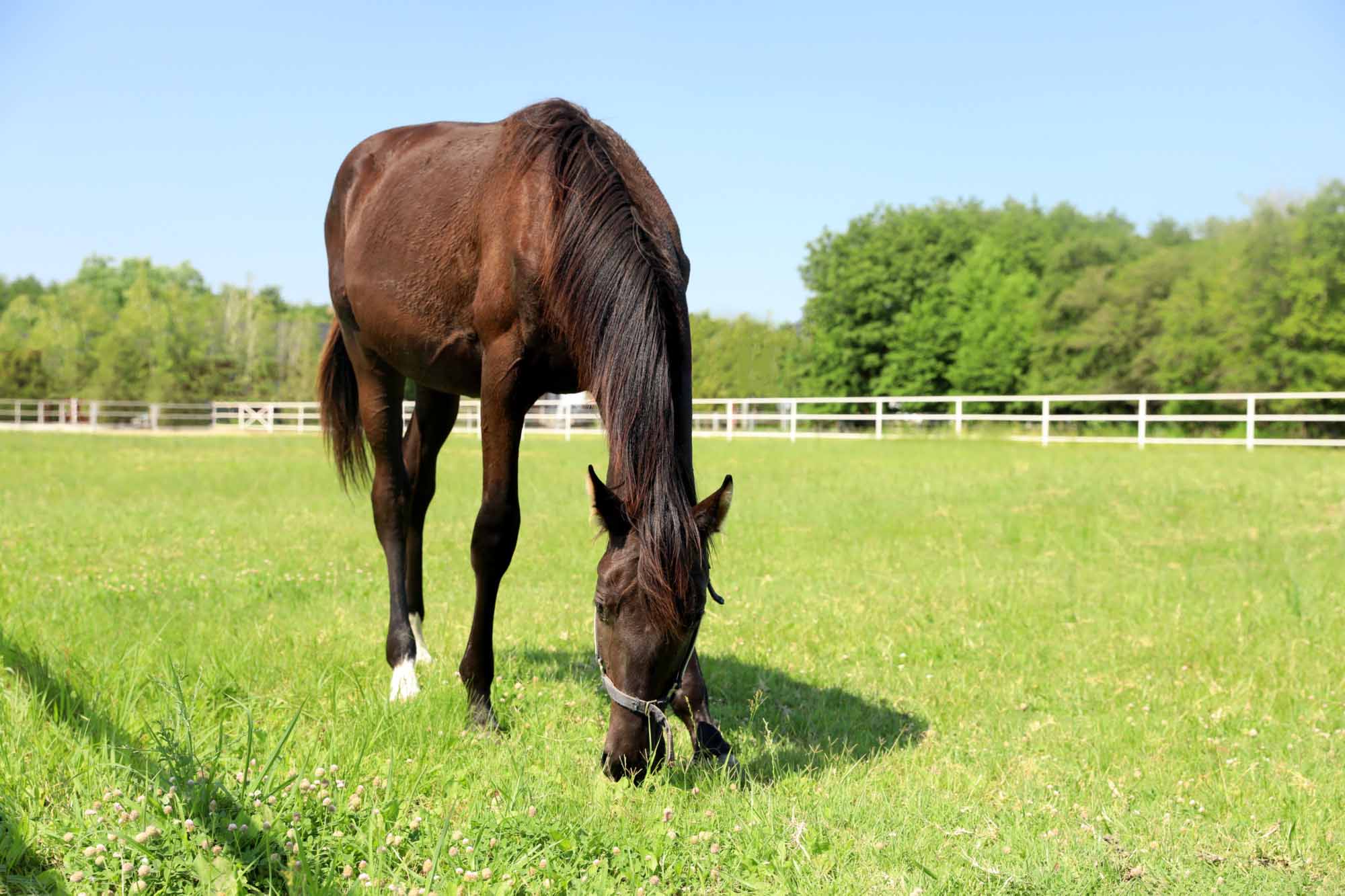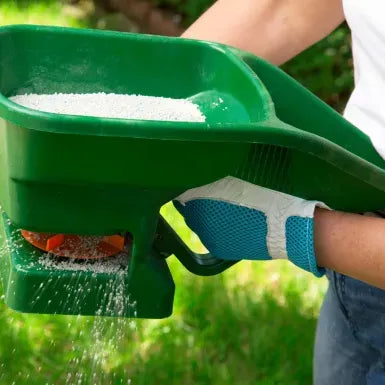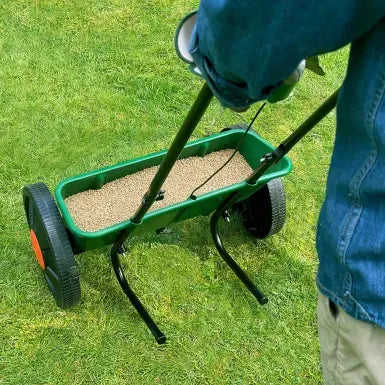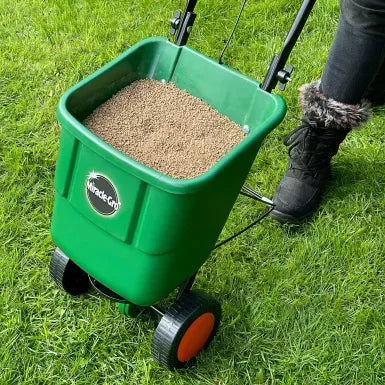Grass seed and fertiliser spreaders are essential gardening tools used to distribute seeds, fertiliser, or other granular materials evenly across a lawn. This ensures uniform coverage, which is crucial for healthy and consistent grass growth. There are three main types of lawn seed spreaders:
Broadcast Spreaders
Broadcast spreaders are ideal for larger areas. They spread the seed or fertiliser over a wider area by dropping it onto a spinning disc, which flicks it out in a semicircle in front of you. Depending on the density of the product, a pedestrian broadcast spreader covers approximately 1.5 to 2.5 meters. These spreaders can cover large areas quickly, but they are less precise. Therefore, use caution near flower beds or patios to avoid spreading seed or fertiliser where it's not wanted.
Drop Spreaders
Drop spreaders offer greater accuracy, dropping the seed or fertiliser in a strip the same width as the hopper. Markings on the hopper show exactly where the product is being applied. Consequently, these spreaders are best for smaller lawns and gardens or areas where precise application is important.
Handheld Spreaders
Handheld spreaders are perfect for the smallest areas. They operate by turning a handle while walking, broadcasting the seed or fertiliser in front of you. Although slightly less accurate, a handheld spreader performs much better than simply throwing grass seed by hand.
Variable Rate Settings
All spreaders have adjustable rate settings to accommodate different products. Due to the variance in products, there isn't a specific setting for each one. Thus, the best approach is to start with a lower setting and go over an area multiple times to ensure even distribution.
In conclusion, using the right spreader helps achieve a healthy, lush lawn with consistent growth. Therefore, choose the spreader that best fits your lawn size and precision needs.





